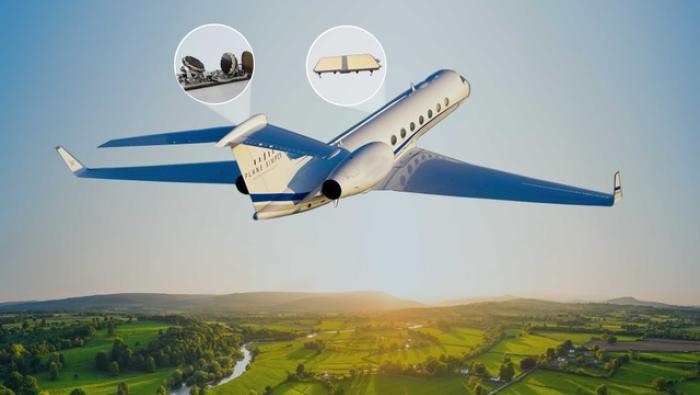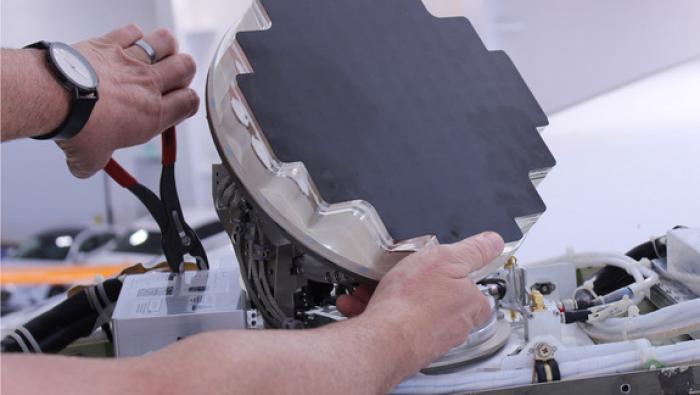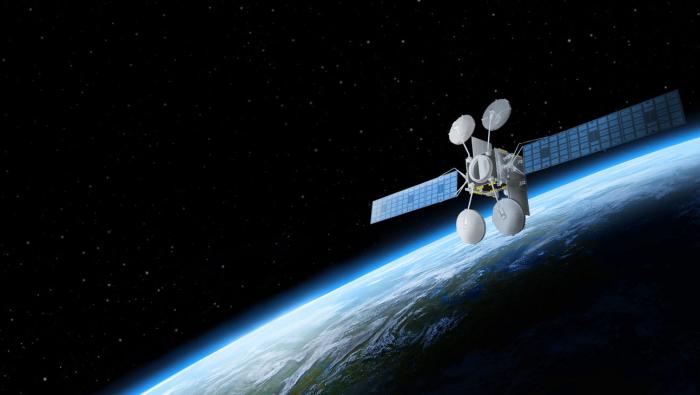“The exponential growth of big data is difficult to perceive. That said, some comparisons can really put it into perspective: at the beginning of 2020, there were 40 times more data found in the digital realm than observable stars in the universe.” - World Economic Forum
Whether they’re flying over the U.S. or Europe, passengers aboard super-midsize and larger business aircraft can enjoy a “C-Suite”- like connectivity experience, thanks to Viasat’s new-generation Ka-band network.
If we began 2020 with more data than there are stars in the visible sky, then we entered 2021 on the leading edge of what can be described as mobile connectivity’s Big Bang. With seemingly everyone working and learning from anywhere these days, the amount of connected data we’re using is expanding at a rate that Albert Einstein would have found hard to comprehend.
Add in the anticipated growth in business aviation travel and it’s easy to understand why today’s business traveler needs super-fast, super-reliable connectivity.
“What we’re seeing is that more business travelers are going to be flying privately,” states James Person, Viasat’s senior director, global business development, Business Aviation Division. “Companies are either expanding usage within their current fleet to more employees or they are increasing their use of charter and fractional aircraft to meet their needs. And like most of us, these people have spent the past nine months or so using more connected time at home than they ever did before.
“So, they’re going to expect those same high levels of connectivity quality and speed in their super-midsize and larger business aircraft that they enjoy on the ground,” Person adds. “Anything less may have been acceptable in the past, but it won’t be today.”
Seamless Video on the Go
Person also says that while email, texting, and web surfing have all experienced exponential growth, the one area that is most gobbling galactic-size chunks of data is remote video conferencing.
“Users have doubled down on remote video everywhere in the world,” he says. “Remote workers need to stay connected, and what is a business jet traveler if not a textbook definition of a remote worker? Today, doing business requires remote video conferencing. That can be a problem with some aircraft connectivity systems.”
As Person explains, a typical provider delivers five Mbps to the cabin. And that may be plenty if there are only two or three people connected at a given time. But that rarely happens. So, with more people traveling on company aircraft, there will be more people trying to simultaneously access the service. That’s where the problems come in.
“When too many people try to sign on to a network,” Person continues, “you can have ‘instantaneous bandwidth demand.’ The sudden draw can be quite large, and the system will struggle. With Viasat’s uncapped Ka-band, that is never an issue. We’ve engineered our network to handle the load during the busiest of times, so the user’s experience won’t suffer.”
And by “busiest of times,” Person means periods when the connection is simultaneously streaming live TV, downloading large files, and hosting a video conference call. While that would quickly strangle other services, with Viasat’s uncapped Ka band, there’s still plenty of bandwidth to do all this and for the flight crew to be online checking flight plans, weather, and trip information.
“Just like your home connection, Viasat’s uncapped Ka-band won’t slow down or disrupt your online use,” he adds. “Our network can easily hit those peaks and keep the user experience at a very high level.”

Business at 80 Mbps
While high-speed connectivity may be fairly common for large-cabin aircraft, Viasat’s uncapped Ka-band is the first system to offer the capability to operators of super-midsize aircraft like the Gulfstream 280, Embraer Praetor 600, and others.
“We can consistently deliver a quality user experience because we are the only provider that engineers and manufacturers all of our components from the aircraft’s LRUs to the satellites,” Person says. “Our LRUs are very small and our satellites are very, very capable. Put them together and we’re pushing the connectivity speed limits.”
Just how fast is Viasat’s uncapped Ka-band service? To find out, the company recently asked its customers to do a speed test during typical usage times and send a photo via its social media channels.
“It was very interesting,” Person states. “We expected to routinely see 20 Mbps to the cabin, but when we started receiving the photos, we were getting speeds of 45, 56, all the way up to 80 Mbps. That’s amazing. And keep in mind that this was from airplanes at cruising altitude. The typical home connection isn’t much faster.”
But as Person says, “Speed is great, but Viasat’s commitment is to deliver a wonderful user experience.” While that’s hard to quantify, it’s pretty clear the company is hitting its goal.
One operator, in particular, is extremely happy, says Person. “Just recently, he was crossing the North Atlantic in his Embraer Praetor 600. During that trip, the aircraft used over 15 gigabytes of data. Considering that feature movies use about two gigabytes each, they were obviously getting a lot of value out of that Ka system.”

Forward-Compatible Airborne Connectivity at Down-to-Earth Prices
While they may operate similar aircraft types, every business uses its airplanes in a unique way. That’s why Viasat has developed a portfolio of service plans to meet the broadest spectrum of connectivity needs.
“Knowing that our customers are going to increase their data usage, Viasat is the only Ka-band provider that offers a 200-gigabyte-per-month plan. That’s double our previously highest data plan,” Person said. “Obviously, that’s designed for large-cabin, long-range aircraft operators with high passenger counts. It can accommodate everyone on the aircraft with no overages.
“Another unique service we offer is our Unlimited Streaming Option,” Person continues. “It’s free with our two largest plans and available for a slight fee on our other plans. It provides full-time streaming of live TV programming, and it doesn’t subtract at all from the operator’s monthly data allocation. And it works on the Viasat Ka-band shipset, so there’s no additional equipment to buy.”
While plans like these are very popular with international travelers, they may not be as attractive to companies operating mainly in the U.S. Person says that to meet their needs, Viasat has a Regional Plan that covers the contiguous United States and delivers all the benefits of the company’s uncapped Ka-band service for under $5,000 a month.
“Operators who choose the Regional Plan can opt to add international roaming to their package for the infrequent trips they may make to Mexico, the Caribbean, or Europe,” Person states. “That way they enjoy the connectivity they need at a very attractive price.”
While on the subject of coverage, Person also explains that while Viasat’s uncapped Ka-band connectivity is currently only available in the contiguous U.S., Mexico, the Caribbean, North Atlantic corridor, and parts of Europe, that’s soon going to change.
“When we launch our VS-3 satellites, they will enable us to provide all of the benefits of our uncapped Ka connectivity solution to most of the world,” Person says. “And if they are current Ka-band subscribers, it will require no changes to the aircraft’s hardware. That’s how we can provide the best connectivity going forward while protecting the customer’s investment.”
Learn how Viasat is elevating C-suite connectivity up to the 400th floor. Download the case study.








